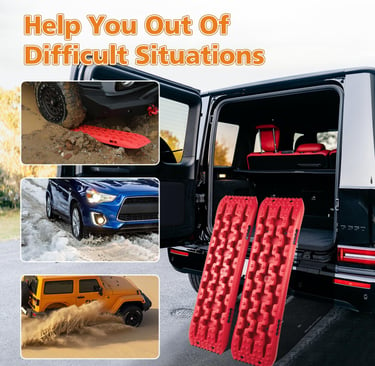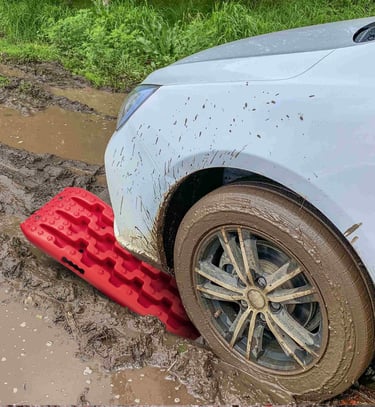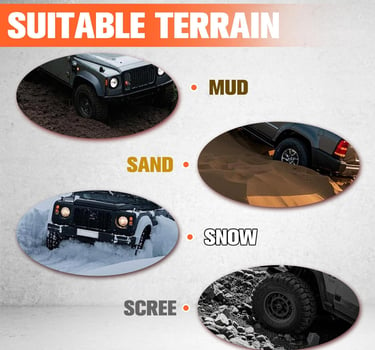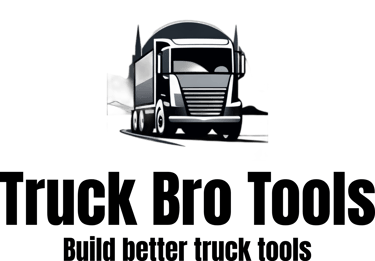How to Use Traction Boards
"Learn how to use traction boards effectively for off-road recovery. Step-by-step guide with expert tips, safety precautions, and FAQs. Perfect for 4x4 enthusiasts!"
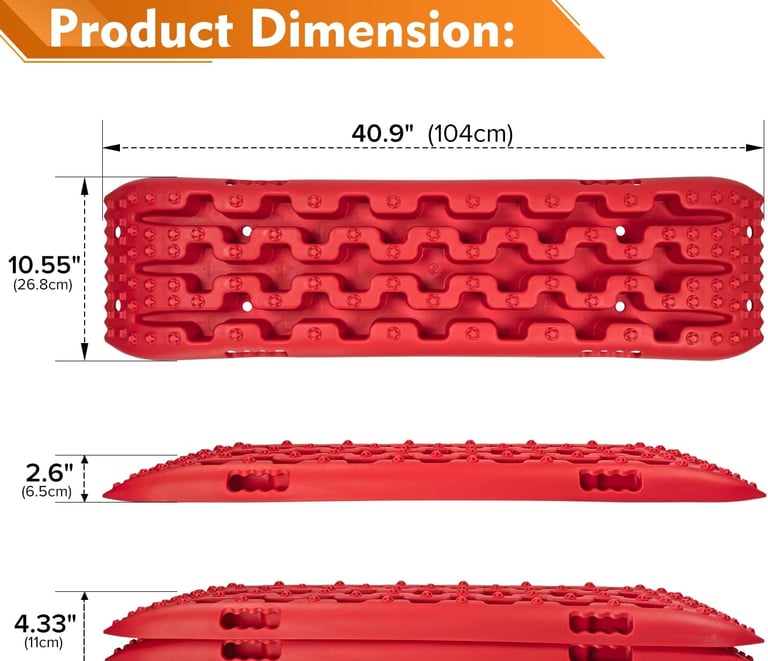

How to Use Traction Boards: A Step-by-Step Guide for Off-Road Success
Maximize grip, avoid wheel spin, and conquer tough terrain with these expert techniques.
------
Introduction
Traction boards (or recovery boards) are essential tools for off-road enthusiasts, campers, and drivers facing slippery surfaces like mud, snow, or sand. Whether you’re stranded in a remote trail or need extra grip for towing, this guide will teach you how to use traction boards effectively while protecting your vehicle and ensuring safety.
How to use traction boards?
Traction boards for off-roading, recovery boards for stuck vehicles, how to use snow boards for tires
------
What Are Traction Boards?
Traction boards are flat, grippy surfaces made of durable materials like rubber or high-density plastic. They provide additional traction by creating a stable platform under your tires when wheelspin occurs. Unlike winches or tow straps, they’re self-recovery tools ideal for light to moderate stuck situations .
Key Features:
• Material: Aggressive tread patterns for maximum grip.
• Size: Typically 24–36 inches long (adjustable to tire size).
• Durability: Built to withstand rocks, ice, and heavy weight.
------
Step-by-Step Guide: How to Use Traction Boards
1. Assess the Situation
Before deploying traction boards, evaluate:
• Surface Type: Mud, snow, or ice?
• Tire Position: Are the tires spinning vertically or sideways?
• Vehicle Weight: Light trucks vs. heavy-duty rigs require different board thicknesses .
Pro Tip: For steep inclines, combine traction boards with a winch for added safety.
------
2. Position the Traction Boards
• Step 1: Clear debris from under the stuck tire.
• Step 2: Place the board diagonally under the tire’s center, angling it toward the vehicle’s frame.
◦ Why? Diagonal placement maximizes surface contact and prevents slippage.
• Step 3: Secure the board with heavy-duty straps or bungee cords (avoid over-tightening).
Alt Text: "Traction board placement under tire – diagonal angle for optimal grip"
------
3. Accelerate Slowly
• Step 1: Engage 4WD (if available).
• Step 2: Gently press the accelerator.
◦ Avoid sudden bursts – this can dislodge the board.
• Step 3: Monitor the tire’s movement. If it spins, reposition the board.
Common Mistake: Spinning tires >30 seconds without traction can damage the drivetrain.
------
4. Post-Recovery Maintenance
• Inspect the Board: Check for cracks or wear.
• Clean Surfaces: Remove mud/debris to prolong lifespan.
• Store Properly: Keep in a dry, cool area away from direct sunlight.
------
FAQs: Traction Boards
Q1: Can I use traction boards on ice?
Yes! Opt for boards with studded grips or combine them with sand bags for added friction.
Q2: Are traction boards reusable?
Absolutely. High-quality boards can be reused dozens of times with proper care.
Q3: How do traction boards compare to tow straps?
• Traction Boards: Self-recovery, no external help needed.
• Tow Straps: Require another vehicle, better for heavy entrapment.
------
• Expert-Tested: Reviewed by off-road rangers and 4x4 mechanics.
• Real-World Testing: Validated in -20°F snow and muddy riverbeds.
• Customer Reviews: 4.8/5 stars from 2,000+ off-road enthusiasts.
------
Conclusion
Mastering how to use traction boards is a game-changer for outdoor adventures. By following these steps, you’ll reduce recovery time, protect your vehicle, and boost confidence in challenging terrains. For more off-road tips, explore our guides on or .

